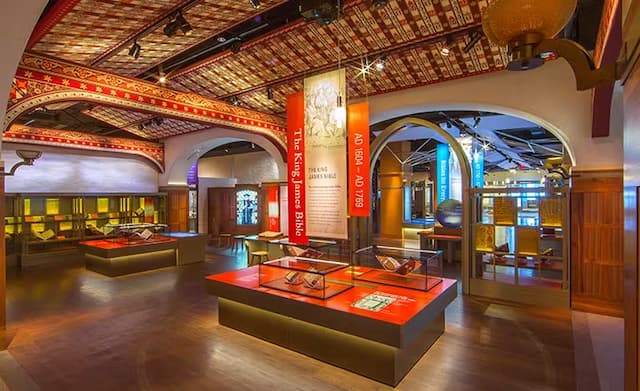Alternate Chronology of the Crucifixion of Jesus
The Greatest Gift of all
“For God loved the world so much that He gave His One and Only Son, that whoever believes in Him shall not perish but have eternal life.” (John 3:16)

Like Christmas, celebrating Jesus’ birth, we may celebrate these events of the crucifixion on symbolic days which remind us of the literal events, even though we may not be following their exact chronology or dates.
Share good news – Share any page freely.
Copy and share this link on your media, eg Facebook, Instagram, Emails:
Alternate chronology of the crucifixion of Jesus:
https://renewaljournal.com/2020/12/18/alternate-chronology-of-the-crucifixion-of-jesus/
FREE SUBSCRIPTION: for new Blogs & free offers
Free PDF books on the main page – www.renewaljournal.com
Some scholars argue for a crucifixion on the Thursday of Holy Week followed by two Sabbath days, the Passover Sabbath on Friday and the regular Sabbath on the Saturday of the Feast of Unleavened Bread. Passover is one day while the Feast of Unleavened Bread lasts for seven days.
Jesus led the Last Supper with his disciples on the same Jewish day, after sunset, that he died, the day the Passover lambs were killed, to be eaten that night on the special Passover Sabbath (the next Jewish day, as the day ended at sunset).
A literal translation of Matthew 28:1 has Sabbaths in the plural (in Greek), allowing for two: After the Sabbaths, around dawn on the first day of the week, Mary Magdalene and the other Mary went to take a look at the burial site. (International Standard Version, © 1995-2014 by ISV Foundation.)
John also allows for this: Now it was the day of Preparation, and the next day was to be a special Sabbath (John 19:31, see also John 13:1).
This chronology correlates with Jesus’ predictions:
For just as Jonah was for three days and three nights in the belly of the sea monster, so for three days and three nights the Son of Man will be in the heart of the earth (Matthew 12:40).
Then he took the twelve aside and said to them, ‘See, we are going up to Jerusalem, and everything that is written about the Son of Man by the prophets will be accomplished. 32 For he will be handed over to the Gentiles; and he will be mocked and insulted and spat upon. 33 After they have flogged him, they will kill him, and on the third day he will rise again’ (Luke 18:31-33).
James Tabor examines the gospel accounts of the last supper in his article ‘The Last Days of Jesus: A Final “Messianic” Meal’, reproduced by the Biblical Archaeology Society (https://www.biblicalarchaeology.org/daily/people-cultures-in-the-bible/jesus-historical-jesus/the-last-days-of-jesus-a-final-messianic-meal/). He writes:
The confusion arose because all the gospels say that there was a rush to get his body off the cross and buried before sundown because the “Sabbath” was near. Everyone assumed the reference to “the Sabbath” had to be Saturday so the crucifixion must have been on a Friday. However, as Jews know, the day of Passover itself is also a “Sabbath” or rest day no matter what weekday it falls on. In the year 30 AD Friday, the 15th of the Jewish month Nisan was also a Sabbath so two Sabbaths occurred back to back Friday and Saturday. Matthew seems to know this as he says that the women who visited Jesus’ tomb came early Sunday morning “after the Sabbaths” (Matthew 28:1).
As is often the case, the gospel of John preserves a more accurate chronology of what went on. John specifies that the Wednesday night “last supper” was “before the festival of Passover.” He also notes that when Jesus’ accusers delivered him to be crucified on Thursday morning they would not enter Pilate’s courtyard because they would be defiled and would not be able to eat the Passover that evening (John 18:28). John knows that the Jews would be eating their traditional Seder meal Thursday evening.
Reading Mark, Matthew, and Luke one can get the impression that the “last supper” was the Passover meal. Some have even argued that Jesus might have eaten the Passover meal a day early—knowing ahead of time that he would be dead. But the fact is, Jesus ate no Passover meal in 30 CE. When the Passover meal began at sundown on Thursday, Jesus was dead. He had been hastily put in a tomb until after the festival when a proper funeral could be arranged.
That discussion sent me checking the plural Sabbaths in Matthew 28:1. It is plural and can be used for either Sabbaths or Sabbath, as also in Matthew 12:1. Most translators opt for singular, but a few retain the literal plural, such as these for Matthew 12:1 and 28:1.
At that time Jesus went through the grain on the Sabbath days. And his disciples were hungry, and began to pluck the ears of grain and to eat.
(New Matthew Bible,© 2016 by Ruth Magnusson (Davis))
At that time did Jesus go on the sabbaths through the corn, and his disciples were hungry, and they began to pluck ears, and to eat,
(Young’s Literal Translation, by Robert Young who compiled Young’s Analytical Concordance.)
After the Sabbaths, around dawn on the first day of the week, Mary Magdalene and the other Mary went to take a look at the burial site.
(International Standard Version, © 1995-2014 by ISV Foundation.)
The Bible passages allow for a crucifixion on the Thursday of Holy Week, and even where Sabbath is used in the singular it does indicate that they found the stone rolled away on the first day of the week after that Sabbath.
That Friday may have been a special Passover Sabbath, not just the Saturday. Now it was the day of Preparation, and the next day was to be a special Sabbath. Because the Jewish leaders did not want the bodies left on the crosses during the Sabbath, they asked Pilate to have the legs broken and the bodies taken down (John 19:31).
Irrespective of the day, the great significance is that the Lamb of God who takes away the sin of the world was crucified on the Day of Preparation for the Passover, the day on which the Passover lamb was killed so that after sunset the Passover could be celebrated on the next Jewish day beginning after sunset.
John suggests this: Now before the Feast of the Passover, when Jesus knew that His hour had come that He should depart from this world to the Father, having loved His own who were in the world, He loved them to the end. 2 And supper being ended, the devil having already put it into the heart of Judas Iscariot, Simon’s son, to betray Him, 3 Jesus, knowing that the Father had given all things into His hands, and that He had come from God and was going to God, 4 rose from supper and laid aside His garments, took a towel and girded Himself. 5 After that, He poured water into a basin and began to wash the disciples’ feet, and to wipe them with the towel with which He was girded. (John 13:1-5)
The synoptic Gospels (Matthew, Mark, and Luke) describe how the meal with Jesus was celebrated as a Passover meal and Jesus gave it new meaning, telling us to “do this in remembrance of me” (Luke 22:19; 1 Corinthians 11:23-25).
Like Christmas, celebrating Jesus’ birth, we may celebrate these events of the crucifixion on symbolic days which remind us of the literal events, even though we may not be following their exact chronology or dates.
I’m content to follow the traditional chronology and dates, as in our diaries, perhaps as symbolic and liturgical reminders of the greatest events in human history.
See also:
 *
*
Crucified and Risen – Blog
Crucified & Risen – PDF
The Easter Story

Holy Week, Christian Passover & Resurrection – Blog
Holy Week, Christian Passover & Resurrection – PDF
3 books in 1

Holy Week – Blog
Holy Week – PDF
Summary of the events of Holy Week
Medical-Forensic Explanation of the Shroud of Turin
English translation of Model of the wounded Shroud of Turin image
Included in BLOGS INDEX 4: DEVOTIONAL (INCLUDING TESTIMONIES)






